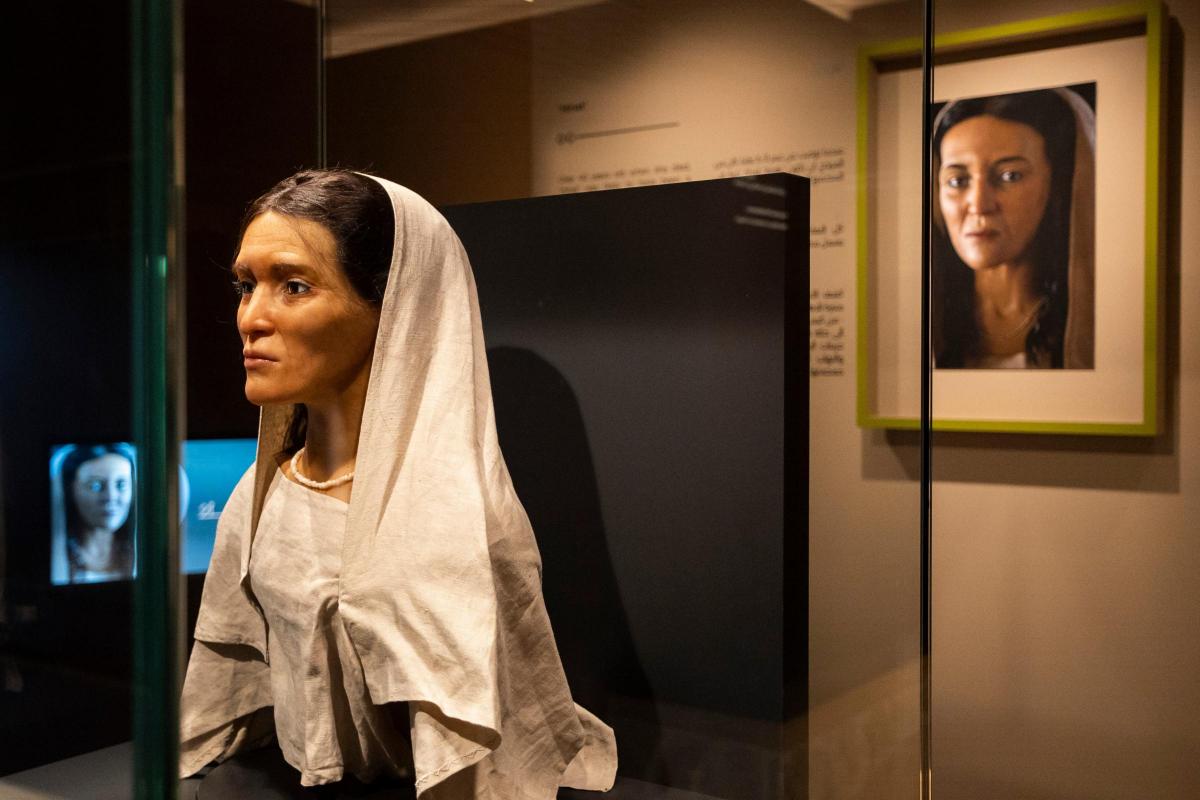What is believed to be the first known reconstruction of an ancient Nabataean woman’s face will be displayed in Saudi Arabia after years of work from archaeologists, anthropologists and academics.
The remains of the woman, known as Hinat, were found in a tomb on the outskirts of the ancient city of Hegra – she was thought to have died around the first century BC.
Archaeologists, anthropologists, forensic reconstruction experts and a 3D sculptor were all involved in the process – after a 3D reconstruction was completed and validated in July 2020, work began on making molds to produce a silicon bust of her face.
The reconstruction will be displayed at the Hegra Welcome Centre in AlUla from February 6.
Dr Christopher A Tuttle, a Nabataean specialist, said it is “the first chance we have to really envision what these people looked like”.
He added: “One of the problems in Nabataean archaeology and the study of the people is we lack images of them.
“They’re not portrayed very often in their own art, and for many decades of people working at Nabataean archaeological sites, we didn’t have very many human remains.”

Dr Helen McGauran, project lead for the reconstruction, said: “They’re still a fairly mysterious civilisation to a lot of people.
“I hope that this project will enable people to engage with the faces, the characters, the story of the Nabataeans in a much deeper way than perhaps has previously been realised.”
The Nabataeans were a group thought to be from central Arabia who became wealthy as the result of trade.
Their civilisation was said to have been a diverse one, while they carved “fabulously elaborate tombs into the sandstone cliffs that surround Hegra” according to National Geographic.




Why are you making commenting on The Herald only available to subscribers?
It should have been a safe space for informed debate, somewhere for readers to discuss issues around the biggest stories of the day, but all too often the below the line comments on most websites have become bogged down by off-topic discussions and abuse.
heraldscotland.com is tackling this problem by allowing only subscribers to comment.
We are doing this to improve the experience for our loyal readers and we believe it will reduce the ability of trolls and troublemakers, who occasionally find their way onto our site, to abuse our journalists and readers. We also hope it will help the comments section fulfil its promise as a part of Scotland's conversation with itself.
We are lucky at The Herald. We are read by an informed, educated readership who can add their knowledge and insights to our stories.
That is invaluable.
We are making the subscriber-only change to support our valued readers, who tell us they don't want the site cluttered up with irrelevant comments, untruths and abuse.
In the past, the journalist’s job was to collect and distribute information to the audience. Technology means that readers can shape a discussion. We look forward to hearing from you on heraldscotland.com
Comments & Moderation
Readers’ comments: You are personally liable for the content of any comments you upload to this website, so please act responsibly. We do not pre-moderate or monitor readers’ comments appearing on our websites, but we do post-moderate in response to complaints we receive or otherwise when a potential problem comes to our attention. You can make a complaint by using the ‘report this post’ link . We may then apply our discretion under the user terms to amend or delete comments.
Post moderation is undertaken full-time 9am-6pm on weekdays, and on a part-time basis outwith those hours.
Read the rules hereLast Updated:
Report this comment Cancel